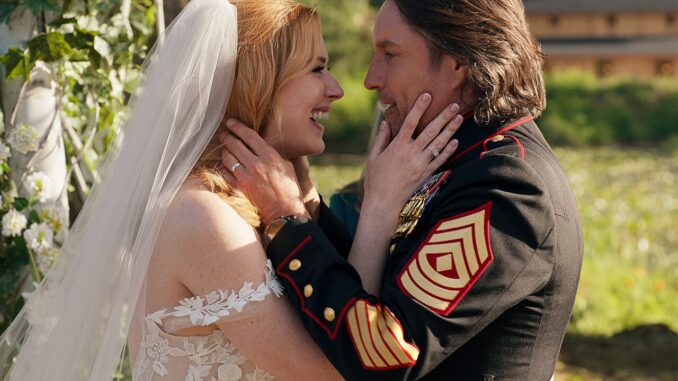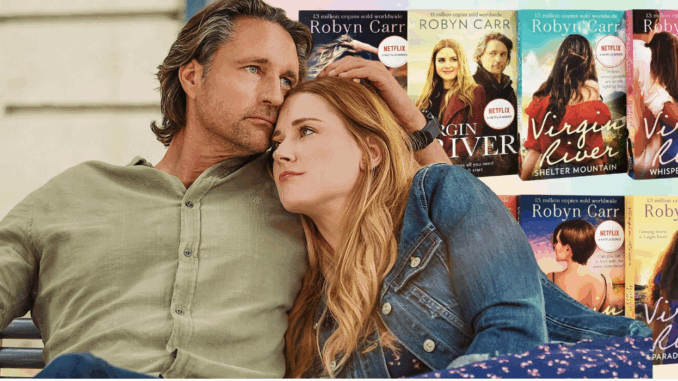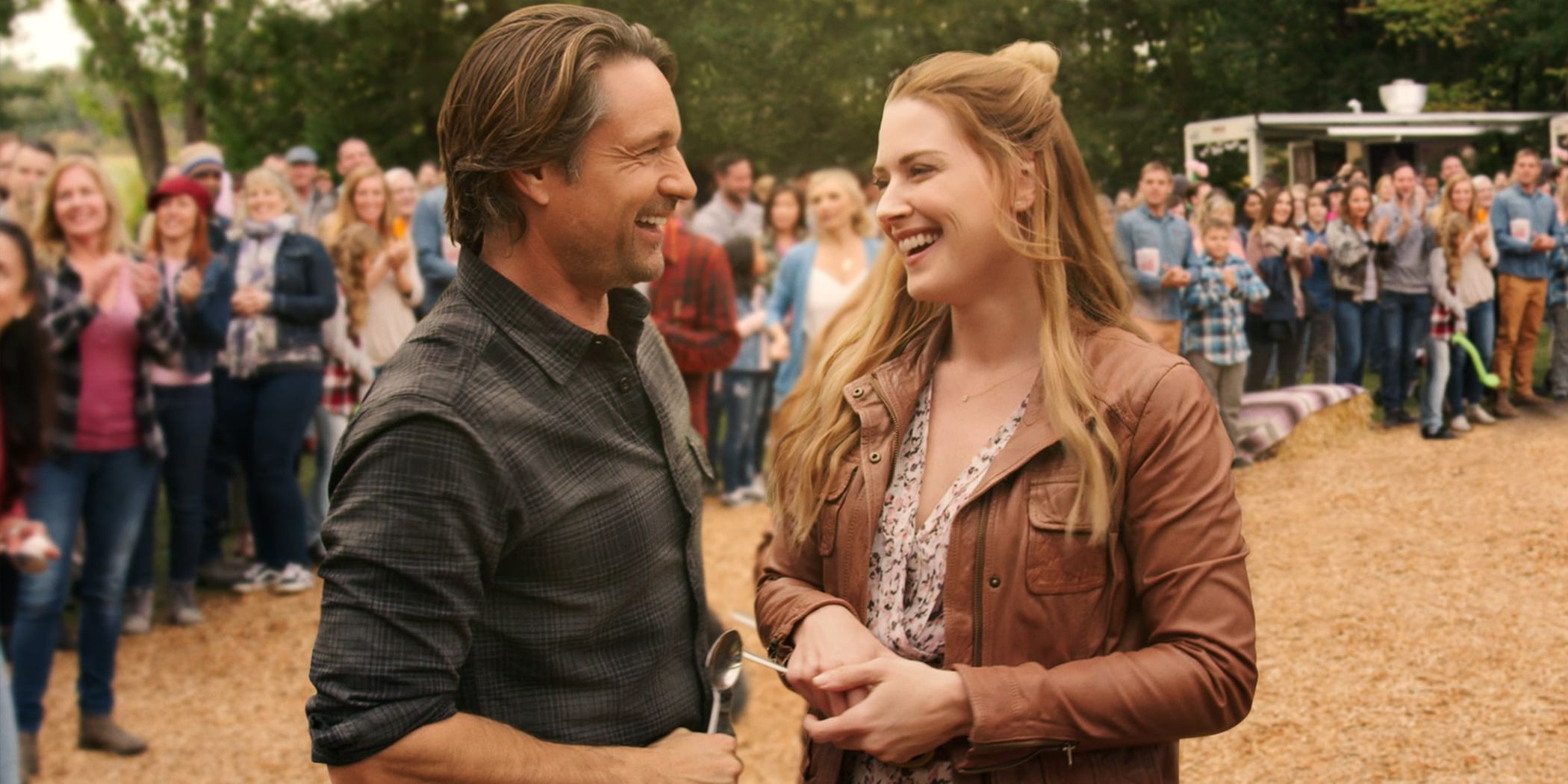
Inside the 7 Biggest Differences That Changed Everything — and Why Fans Still Can’t Get Enough
By the time Virgin River hit Netflix, Robyn Carr’s beloved book series had already sold millions of copies and built a loyal following of readers who dreamed of escape to its misty Northern California haven. But when the show premiered, it became clear: this wasn’t the same Virgin River.
The screen version wasn’t just cozy — it was cinematic, stormy, and emotionally raw. Characters were rewritten, love stories reimagined, and entire plotlines reborn in fire and heartbreak. The result? A series that feels both nostalgic and new — a tribute and a rebellion rolled into one.
Here’s a closer look at how Netflix’s Virgin River reshaped the world of Robyn Carr’s novels — and why every change made it burn a little brighter.

1. Mel’s Story: From Healing to Survival
In Robyn Carr’s books, Mel Monroe arrives in Virgin River grieving her husband’s death, seeking peace and purpose. But Netflix’s version digs deeper — much deeper.
Here, Mel (Alexandra Breckenridge) is not just a widow; she’s a woman shattered by years of fertility struggles, loss, and guilt. Her pain is more visible, her strength more hard-won. The show transforms Mel from a quiet romantic heroine into a modern-day survivor, standing tall amid heartbreak.
“On the show, Mel isn’t running from her grief — she’s learning how to live with it,” Breckenridge once said. “That’s what makes her so human.”
2. Jack Sheridan: The Protector with Scars
In the novels, Jack is a steady ex-Marine who’s already healed from his past. But Netflix turned him into a man still fighting his demons.
Martin Henderson’s Jack is haunted, restless, and fragile beneath his heroism. His PTSD shapes not only his choices but also his relationship with Mel, turning their romance into a delicate balance between passion and pain.
“He’s not the perfect small-town hero anymore,” one producer shared. “He’s what happens when courage meets trauma.”
It’s a transformation that makes Jack feel real — a man who loves deeply, but can’t always save himself.
3. Charmaine: The Woman Who Changed the Game
Book fans were stunned when the show elevated Charmaine Roberts (Lauren Hammersley) from a minor character into one of its central dramatic forces.
In Carr’s novels, she barely registers as a romantic obstacle. On Netflix? She’s unforgettable — fiery, unpredictable, and pregnant with Jack’s twins (or so she claims).
The show’s decision to center her storyline on jealousy, deception, and emotional manipulation added a soap-like intensity to the series — one that polarized fans, but undeniably raised the stakes.
Charmaine may not exist like this in the books, but in the series, she became a symbol of chaos — and heartbreak.
4. Doc and Hope: A Love That Never Existed (Until Now)
One of Netflix’s most beloved storylines doesn’t appear in the novels at all. In the books, Doc Mullins is married to a gentle, supportive woman named June. But the show tossed that out and introduced Hope McCrea (Annette O’Toole) — the fiery, no-nonsense mayor of Virgin River.
Their relationship is part sparring match, part soulmate story. They bicker, banter, and break your heart — two aging lovers rediscovering what devotion means when time runs short.
Hope doesn’t exist in Carr’s world, but she’s become the show’s emotional anchor. “Hope is chaos and compassion rolled into one,” O’Toole said. “She’s proof that love doesn’t fade — it evolves.”
5. Paige Lassiter: From Comfort to Crisis
In the novels, Paige runs a bakery and finds love again after hardship. On Netflix, she’s a survivor hiding from an abusive marriage — and her story takes a dark, terrifying turn.
The show’s bold reimagining of Paige gives voice to women rarely seen in small-town dramas: those living in fear, fighting for freedom. Her disappearance and redemption arc added layers of suspense and realism to the series’ otherwise idyllic setting.
It’s not always easy to watch — but it’s unforgettable.
6. From Cozy Romance to Raw Drama
If Robyn Carr’s books are a cup of tea on a rainy day, Netflix’s Virgin River is the storm outside.
The novels wrap readers in comfort — stories of healing, friendship, and love. But the adaptation leans into melodrama: mystery babies, dangerous secrets, missing people, and emotional breakdowns.
This tonal shift made the show more cinematic, appealing to a generation raised on This Is Us and Grey’s Anatomy. Yet beneath the twists, the soul of Carr’s world remains intact — a community built on hope, forgiveness, and second chances.
7. The Town That Grew Beyond the Page
Netflix expanded Virgin River with characters who never existed in Carr’s books: Brady, the conflicted ex-Marine; Lizzie, the rebellious teen; Preacher, given a deeper backstory of loyalty and sacrifice.
These new faces brought modern issues into the mix — addiction, trauma, belonging — and made Virgin River feel alive, diverse, and ever-evolving.
As one writer put it, “Carr built the map. Netflix built the town.”

Conclusion: Two Rivers, One Current
Whether you fell in love with Carr’s paperbound Virgin River or Netflix’s cinematic version, one truth flows through both — love heals, even when it hurts.
The show may be darker, the characters messier, and the twists wilder, but the heart remains the same: ordinary people finding light in the shadows.
Because Virgin River, in every form, isn’t just a place.
It’s a feeling — the one you get when you finally find home again, even after you’ve lost everything.
